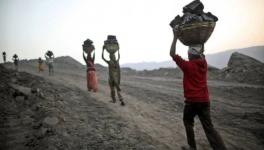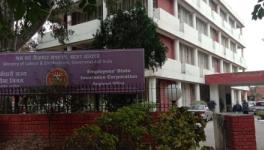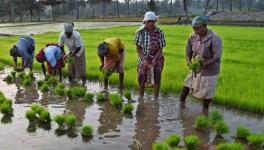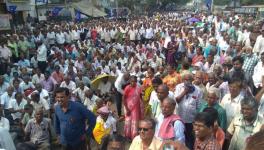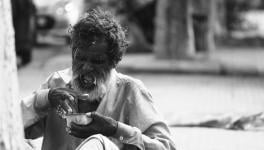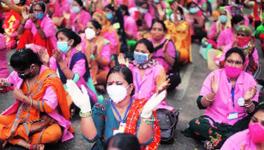Old Age Pension: Stagnant Amounts and Gender Differential
Represenational use only.
Some states have recently announced an increase in entitlements under the old-age pension scheme. For instance, Andhra Pradesh increased the old age pension amount by about Rs 250 to Rs 2500 per month at the beginning of 2022. More recently, the Uttar Pradesh government has announced an increase in the old-age pension amount, taking it to Rs 2,000 per month.
As Haryana goes to polls later this year, there are already election promises being made, one of them being to increase the old-age pension to Rs 6,000 per month in the state.
However, despite recent increases by a few states, the entitlements under the old-age pension scheme remain abysmally low. While the entitlement amount under the central government scheme has remained almost stagnant since 2007, the contribution by state governments has either remained low or non-existent. There exist several inadequacies in the provision of old-age pension both at the level of Centre and states.
Moreover, there are huge variations across states in terms of the amount paid to the old-age beneficiaries. Even the age criterion differs from state to state. The amount under the old-age pension scheme ranges from as low as Rs 300 per month in Assam and Madhya Pradesh to Rs 2016 in Telangana.
The number of older people in India was projected at about 137 million in 2021, of which 51% are women. According to some estimates, nearly 80 million are eligible for the old-age pension. However, only about 25 million get the pension. Despite a rise in the number of eligible elderly, especially in the aftermath of the COVID-19 pandemic, the central government allocations for the old-age pension scheme have remained stagnant. For the Indira Gandhi National Old Age Pension Scheme, the budget allocation was Rs 6,259 crore in both 2020-21 and 2021-22, and was increased only marginally to Rs 6564 crore in the 2022-23 budget.
Old Age Pension – A Constitutional Requirement
Article 41 of the Indian Constitution directs the state to provide public assistance to its citizens in case of "unemployment, old age, sickness and disablement within the limit of its economic capacity and development." Old age pension appears in the Concurrent List of the 7th Schedule of the Constitution of India. This implies that both the Centre and states have the responsibility for providing social security to the elderly.
While the central government provides for old-age pensions under the National Social Assistance Programme (NSAP), the states are urged to provide an equivalent amount. NSAP is a 100% Centrally Sponsored Scheme (CSS) with no state share. However, states add top-ups to central assistance from their own resources.
The NSAP was launched in 1995 with the aim of providing social assistance to the destitute. National Old Age Pension Scheme was one of the components of NSAP. In 2007, NSAP was extended to cover all individuals living below the poverty line and the old-age pension component was renamed Indira Gandhi National Old Age Pension Scheme (IGNOAPS).
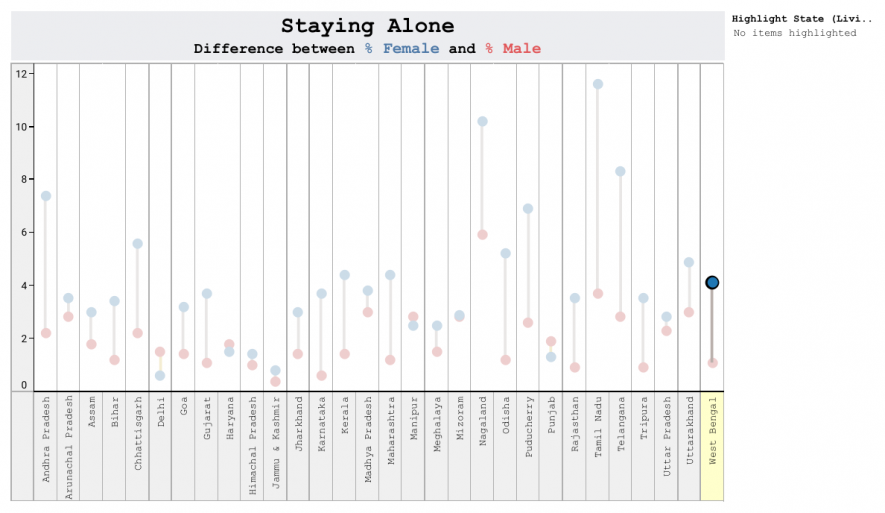
The IGNOAPS is a non-contributory old-age pension scheme that covers Indians who are 60 years and above and live below the poverty line. In 2011, the age limit for IGNOAPS was lowered from 65 to 60 years, and the monthly pension amount for those aged 80 years and above was raised from Rs 200 to Rs 500. Thus, under the scheme, BPL persons aged 60 years or above are entitled to a monthly pension of Rs. 200 up to 79 years of age and Rs.500 thereafter.
This means that the elderly living below the poverty line receive a paltry sum of roughly Rs 7 per day as income security for persons in the age group of 60-79 years and about Rs 16 per day for 80 years and above.
Old Age Pension - Gender Differential
Recent data reveals that in many states proportion of men getting the IGNOAPS is higher than women. This is despite the fact that in many of these states, the proportion of elderly women staying alone is much higher than that of men.
These observations emerge from the first-ever nationwide survey of the Elderly in India – the Longitudinal Age Survey of India 2017-18. This is the world's largest longitudinal ageing study. The LASI Wave 1 constitutes a comprehensive demographic profile of 72,250 older adults aged 45 years and more.
The LASI data shows that in states such as Himachal Pradesh, Telangana, Andhra Pradesh, Haryana, Uttarakhand, Madhya Pradesh, and Odisha, a larger proportion of men as compared to women avail benefits under the IGNOAPS.
The data also reveals that the proportion of elderly women staying alone is higher than that of men in most states.
In Andhra Pradesh, 48% of elderly men receive the old-age pension under IGNOAPS, and in contrast, only 20% of elderly women get the IGNOAPS pension. In Odisha, 48% of elderly men receive IGNOAS pension in contrast to 37% of elderly women. If we look at the proportion of elderly men and women (above 45 years of age) staying alone, we see that in Andhra Pradesh nearly 7% of women stay alone as against 2% of men. In Odisha, 1% of elderly men stay alone as against 5% of elderly women.
It clearly shows that the central and state governments are responsible for ensuring that elderly women are provided with adequate social security.
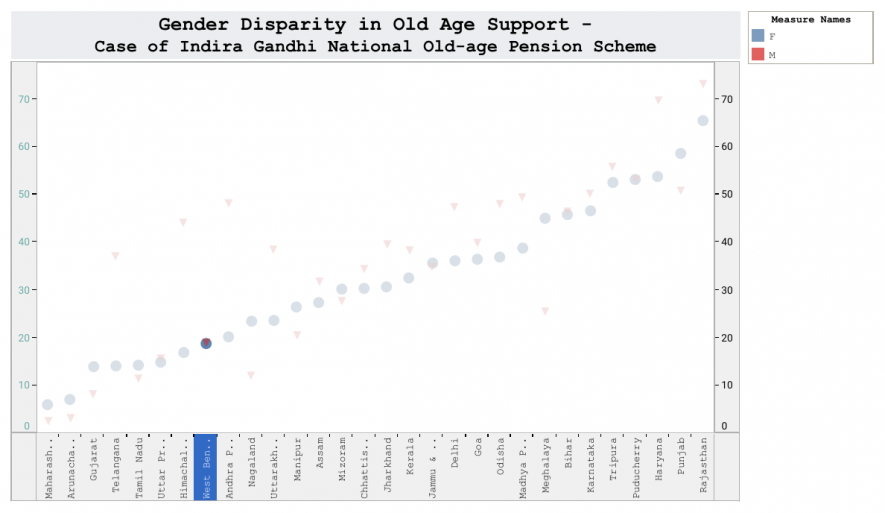
Low and Stagnant Amount Despite Several Recommendations
Entitlement amounts under NSAP have remained the same since 2007. The 22nd Report of the Parliamentary Standing Committee (2021-22) noted that the upward revision of assistance amount under the different components of the NSAP scheme is much awaited. It also placed on record that the Committee had recommended an increase in the 13th (2019-20) and 17th Report as well, but there was no augmentation of pension amounts. Consequently, in its latest report, the Committee has strongly recommended the Rural Development department to "take the issue of increase in pension amount under NSAP seriously and concretise the result on ground level as soon as possible."
In 2013, a Report of the Task Force on Comprehensive Social Assistance Programme submitted to the Government of India also recommended raising monthly pension and expanding coverage.
The Supreme Court had in 2018 said the Centre and states must revisit the grant of pension to the elderly so that it is more realistic, noting that the amount was fixed in 2007.
"Such paltry sums are a mockery. Even if you have to buy a bottle of water, it comes for Rs 20. With Rs 7 per day as old-age pension, how is it possible to meet expenses. Moreover, the BPL category of old people are those who do not have any savings or any other social security net. Even the lowest category of government servants gets a pension of Rs 1000 per day. If the government pensions are increased as per the dearness allowance, why not also increase the pension for poor BPL category people according to the rise in prices," said Shankar Singh, a renowned grass-roots activist and a member of the Mazdoor Kisan Shakti Sangathan.
One of the foremost demands of the activists and experts working on the issue and associated with the Pension Parishad - a large network of organisations and activists – is that the amounts should be indexed to inflation and undergo regular revisions like wage rates. In fiscal terms, they demand raising the allocation from the present meagre amount of 0.45% of the GDP to a modest one of 1.45% of the GDP.
The demand is also to expand the programme's coverage to include all elderly, barring income-tax payers, to equip the senior citizens to manage age-induced problems competently. The programme needs to be expanded to at least all those households that do not possess even one criterion of economic well-being out of the seven as mentioned by the Socio Economic Caste Census.
Shankar added, "How can you expect an 80-year-old from the BPL category to work under schemes such as rural employment guarantee or MGNREGA. Our demand is that an old person should be paid at least half of the minimum wage as pension. This comes out to be roughly around Rs 4000 per month." Drawing attention to the long-standing demand and slogan of the activists fighting for decent pensions as a right of the workers and people, he called for "Budhape mey Aaraam do, Pension aur Samman do! (Give rest in old age, give pension and respect!)."
(This story was partly supported by Fellowship from Tableau Foundation and Equal Measures 2030)
Get the latest reports & analysis with people's perspective on Protests, movements & deep analytical videos, discussions of the current affairs in your Telegram app. Subscribe to NewsClick's Telegram channel & get Real-Time updates on stories, as they get published on our website.









